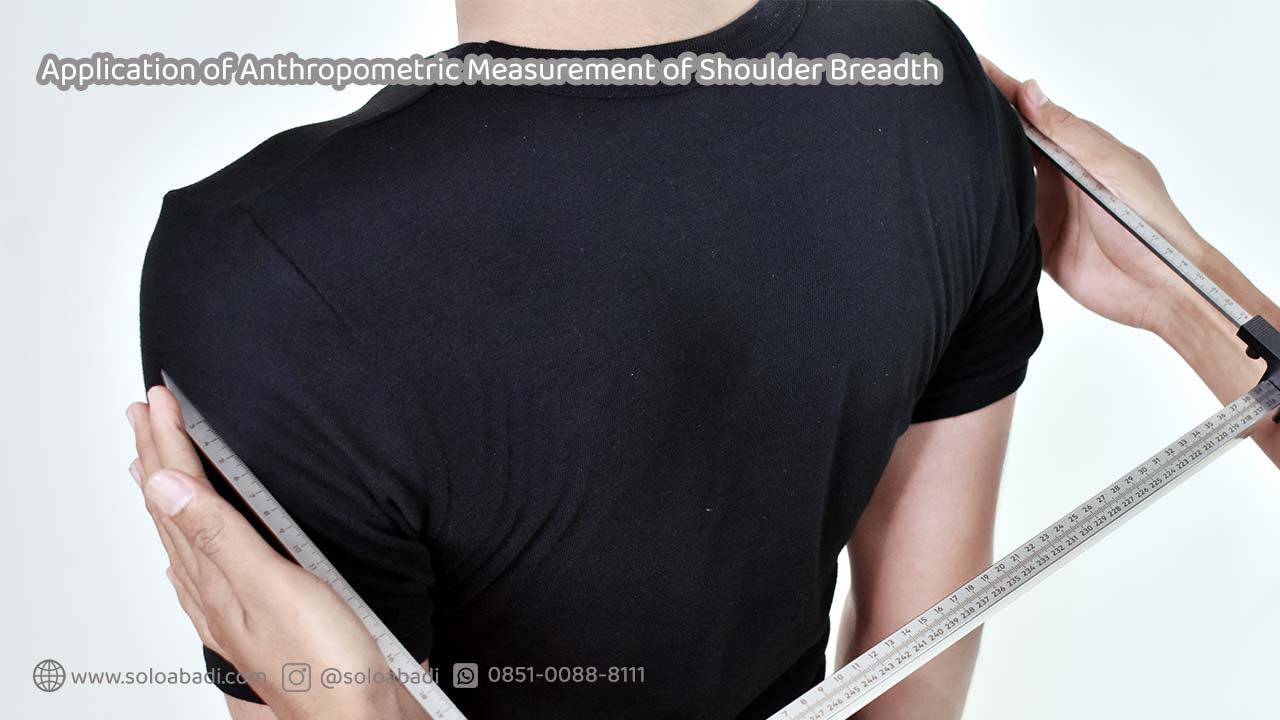Anthropometry and its application in everyday life is always interesting to study. Because the application of anthropometry is very broad and the dimensions are so detailed. Some time ago we have studied the dimensions of measuring eye height and sitting eye height and their application thoroughly. On this occasion, the Solo Abadi editorial team would like to invite solid friends to study the dimensions of shoulder breadth anthropometric measurement and their daily applications.

Anthropometry itself is closely related to ergonomics. Not many also mention that anthropometry is an application of ergonomics. Before we delve into the anthropometric dimensions of shoulder breadth, let’s understand this matter first.
Relation between Anthropometry and Ergonomic
Anthropometry is the study about measurement of the human body dimensions. In terms of the word anthropometry is absorbed from the Greek, namely anthros which means human and metri which means measurement. The application of this knowledge is widely used in various fields, one of which is in designing work systems and products.
Ergonomics is a systematic science in utilizing information about the nature, abilities, and limitations of humans to design work systems. With ergonomics, use and arrangement/facilities can be more effective and provide job satisfaction.
Also Read : Anthropometry, Is an application of Ergonomics Science?
Both anthropometry and ergonomics are correlated with each other. Especially in designing mass product design, anthropometric measurements and ergonomic principles are needed. In anthropometric measurements, of course, not only one dimension is reviewed, a number of body dimensions that have an effect are also reviewed and measured. So what are the dimensions that required? Let us discuss one by one. The following is one of the body dimensions measured for a static position, namely shoulder breadth.
Shoulder Breadth Anthropometric Dimensions Measurement
Shoulder breadth or shoulder width has two dimensions or measuring parts, namely biacromial and bideltoid. Biacromial is the horizontal distance across the shoulders measured between the acromia (bony points). While the bideltoid itself is the maximum horizontal width at the shoulder, measured by the bulge of the deltoid muscle. Both dimensions have their respective applications.

These are used to measure the maximum shoulder distance to determine the size of product designs to military purposes. As a datum reference in several activities or designs. The following are applications for measuring shoulder breadth anthropometry.
Application of Shoulder Breadth Anthropometric Measurement
As mentioned earlier, the measurement results of the shoulder breadth dimensions are used as a reference datum in designing product and military. Specifically, the results of measuring shoulder width or shoulder breadth are used to design mass-produced clothes. As for mass products, the measurements are different from custom measurements, a certain population is required to carry out measurements. This is to find the average size adjusted for age and sex. The size of the clothes itself requires both biacromial and bideltoid measurement data.
Also Read : Understanding The Biacromial in Anthropometric Measurement
In addition to the size of the clothes, the measurement of shoulder breadth is also used in the military, as one of the requirements to entering the police and army forces. Furthermore, the measurement of shoulder breadth, especially the dimension of the bideltoid width, is also used as a helicopter boarding procedure. Where the passenger sitting position is adjusted to the size of the shoulder width between the deltoids.

Based on the Reval safety training, it is stated that the size of the helicopter passenger’s shoulder has an effect on the sitting position on board. Those with a shoulder width greater than 55.9 cm (22”) are classified as extra wide (XBR), and are required to sit in a helicopter seat next to a window that fits their shoulder size. Those with a shoulder width of 55.9 cm or less were classified as regular. The shoulder measurement for this case uses a shoulder breadth bideltoid measurement. The measurement results must be carried out with precise anthropometric measuring instruments. The following are recommendations for the most accurate anthropometric measuring instruments.
The Most Accurate Anthropometric Measuring Tool
The results of anthropometric measurements in measuring shoulder width or shoulder breadth (biacromial and bideltoid) must be accurate and precise. Therefore, a measuring instrument is needed that supports these accurate results. Here the recommendation of the best measuring tools that could be used :
Portable Anthropometry Kit
Metrisis – Portable Anthropometry by Solo Abadi Indonesia, Inc. is an anthropometric measuring instrument derived from the anthropometric chair which is packaged in a portable form, so that the measuring instrument can be moved or carried anywhere easily. Like an innovation, portable anthropometry can be used to measure up to more than 100 dimensions of the human body.
Also Read : Functions and Advantages of Portable Anthropometry Kit
The function of this tool is to carry out anthropometric measurements that are carried out carefully and prioritize the accuracy of the data. This instrument offers measurement capabilities of up to 100 measurements. In addition, its portable form makes this tool can be used unlimited time and done anywhere.
Anthropometric kits from SOLO ABADI have been sent to various departments in Indonesia. Currently, 8 Portable Anthropometry kits from SOLO ABADI have been used, one of which is the Department of Medicine, Islamic University of Indonesia. The following are the details of the Anthropometry Portable Kit product.
Contact Us To Get Anthropometry Products
Get an anthropometric measuring instrument from Solo Abadi by filling in the available ask for price. You can also connect directly through our WhatsApp, because we are ready to contact you immediately.








